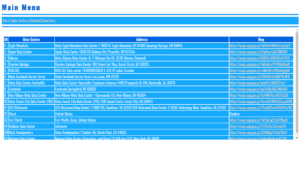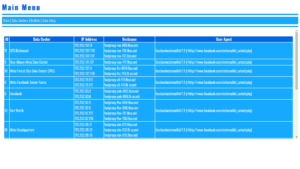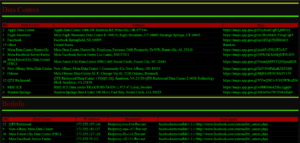Leveraging Power Over User Credentials – Impact on Networks and Global Systems
Leveraging Power Over User Credentials: Impact on Networks and Global Systems
In an increasingly digital world, user credentials are the gateway to a wealth of information and control over various systems. Credential theft has far-reaching implications, not only affecting individual users but also impacting networks, smart technologies, and even national security. This article delves into the intricacies of credential theft, examining its effects on personal and organizational levels, as well as its broader implications for infrastructure and global systems.
1. Understanding Credential Theft
Credential theft involves unauthorized access to user credentials—such as usernames and passwords—which are used to gain entry into digital systems. This can occur through various methods, including phishing attacks, malware, social engineering, and data breaches.
1.1. Methods of Credential Theft
- Phishing Attacks: Cybercriminals trick users into divulging their credentials through fake emails or websites.
- Malware: Software designed to capture credentials or compromise systems.
- Social Engineering: Manipulating individuals into providing sensitive information.
- Data Breaches: Unauthorized access to databases containing user credentials.
2. Effects of Credential Theft on Personal and Organizational Levels
2.1. Personal Impact
For individual users, credential theft can lead to identity theft, financial loss, and unauthorized access to personal accounts. Compromised accounts can be used for fraudulent transactions, spreading malware, or damaging personal reputations.
2.2. Organizational Impact
In organizations, credential theft can have severe consequences:
- Financial Loss: Direct financial loss through fraudulent transactions or the costs associated with responding to a breach.
- Data Breach: Exposure of sensitive company data, including intellectual property, customer information, and confidential communications.
- Operational Disruption: Downtime and disruption to business operations, affecting productivity and service delivery.
- Reputation Damage: Erosion of trust with customers and partners, potentially leading to loss of business.
3. Effects on Network and Smart Technology
3.1. General PC and Smart Technology
- Compromised Devices: Attackers can gain control over PCs and smart devices, using them for further attacks or data collection.
- Botnets: Hijacked devices may be used to create botnets for launching distributed denial-of-service (DDoS) attacks.
- Data Exfiltration: Stolen credentials can lead to unauthorized access to personal or corporate data stored on various devices.
3.2. Internet of Things (IoT)
IoT devices are increasingly integrated into everyday life and critical infrastructure, making them prime targets for credential theft.
- Smart Home Devices: Compromised smart home systems can lead to privacy invasion, unauthorized access to personal data, or control over home automation systems.
- Industrial Control Systems: IoT devices in industrial settings, such as manufacturing or energy sectors, can be targeted to disrupt operations or cause physical damage.
- Healthcare Systems: Unauthorized access to IoT devices in healthcare can lead to breaches of patient data or manipulation of medical devices.
4. Implications for Modern Infrastructure
4.1. Private Sector
In the private sector, credential theft can impact critical infrastructure, including financial institutions, telecommunications, and energy companies. The consequences can include:
- Economic Disruption: Financial losses and market instability due to compromised systems.
- Operational Risks: Disruption of essential services and business continuity issues.
4.2. Government and Public Sector
Credential theft targeting government agencies can have even more serious repercussions:
- National Security: Unauthorized access to sensitive governmental data can lead to espionage, sabotage, or strategic vulnerabilities.
- Public Trust: Breaches involving government databases can erode public trust in institutions and their ability to protect information.
- International Relations: State-sponsored attacks or espionage can lead to diplomatic tensions or conflicts between nations.
5. Mitigation and Response Strategies
5.1. Prevention
- Strong Authentication: Implementing multi-factor authentication (MFA) to add layers of security.
- User Education: Training users to recognize phishing attempts and practice good security hygiene.
- Regular Updates: Keeping software and systems up to date to protect against vulnerabilities.
5.2. Detection
- Monitoring: Implementing continuous monitoring to detect unusual activities or unauthorized access.
- Incident Response Plans: Developing and maintaining a comprehensive incident response plan to address breaches promptly.
5.3. Recovery
- Forensic Analysis: Conducting forensic analysis to understand the scope of the breach and prevent future incidents.
- Communication: Transparent communication with affected parties and stakeholders to manage the fallout and restore trust.
Credential theft represents a significant threat to both individual users and global systems. The impacts are multifaceted, affecting personal security, organizational integrity, and national security. As technology continues to evolve, the importance of robust security measures, vigilance, and preparedness cannot be overstated. By understanding the complexities of credential theft and implementing comprehensive strategies for prevention, detection, and recovery, individuals and organizations can better safeguard against this pervasive threat.













